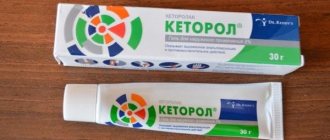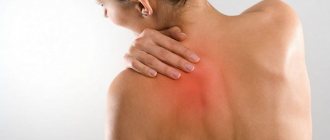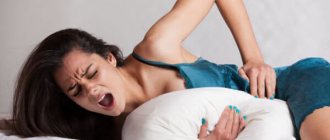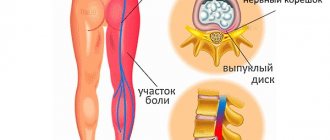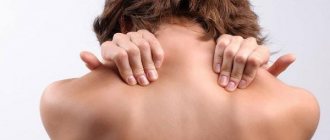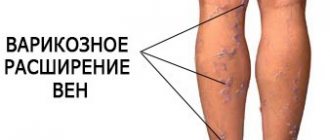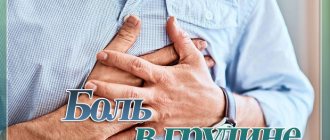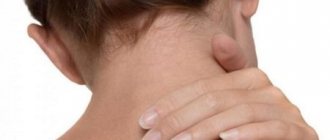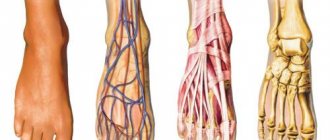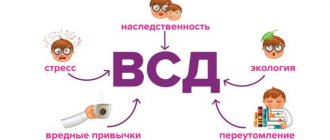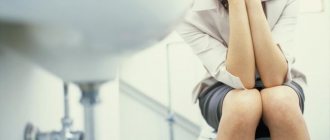There is hardly a person who has not experienced pain concentrated in the skull. Many types of cephalalgia (or headache) have been identified. A monotonous, compressive, chronic tension headache is concentrated in the back of the head and radiates to the forehead, temples, neck, and shoulders. For the majority of the population, the disorder begins in youth. People over 50 years of age encounter it less often. What are the signs and causes of the disease? How can you cure it and how can you avoid it?
Types of tension pain
Tension headache is a neurological disorder, a symptom of which is a tendency to attacks of moderate cephalgia. Mostly, patients self-medicate and consult a doctor when the pain becomes unbearable, frequent, or the disease becomes chronic.
There are two types of this pathology: episodic and chronic. The first can last from several minutes to an hour and occurs mainly after emotional stress, stress, and fatigue.
It is believed that prolonged tension of the head muscles plays a role in the pathogenesis of its occurrence. In the chronic form, pain lasts for more than half a month.
Antidepressants for chronic pain
Chronic pain represents one of the most important health problems, and in addition to classical analgesics, antidepressants are an integral part in the treatment of chronic pain. Antidepressants may be used to treat chronic pain; namely: neuropathic pain, low back pain, fibromyalgia, irritable bowel syndrome (IBS) and cancer pain. There has been evidence supporting the use of tricyclic antidepressants for neuropathic pain, low back pain, fibromyalgia and IBS.
The effectiveness of the new serotonin and norepinephrine reuptake inhibitors has less evidence, but can be recommended for neuropathic pain, migraine and fibromyalgia.
To date, evidence does not support an analgesic effect of serotonin reuptake inhibitors, but beneficial effects on well-being have been reported in some chronic pain conditions.
Causes
Tension headaches occur as a result of several factors. The most common are:
- prolonged muscle tension, especially the neck, scalp, and shoulder girdle;
- constant stress;
- sleep disturbance;
- inadequate nutrition;
- uncomfortable and tight headdress;
- incorrectly selected glasses;
- breathing disorders;
- heavy strain on vision (professions that require working with small parts);
- uncomfortable bed;
- long-term use of anxiolytics and analgesics.
The reasons can be very different, it all depends on individual characteristics. This includes changes in weather, extreme heat, night shifts, emotional breakdown, etc.
Symptoms
Almost all patients complain of a mild or moderate bilateral sensation of muscle tightening and squeezing. Sometimes there is a feeling that the whole head is “splitting”, but often patients can very clearly point to the location of the pain (“a hoop around the head”).
Pain can occur at any time of the day and last for several hours, days or even weeks. This condition is not accompanied by an increase in body temperature. But it affects the quality of life, causing a feeling of fatigue and discouraging interest in what is happening around.
In addition to the main symptom, vision problems, dyspeptic disorders, difficulty breathing, emotional anxiety, and irritability may appear. Loss of coordination, tremor, and unsteady gait are also associated neurological signs.
As a rule, during an attack the patient avoids bright light and loud music.
Since any disease affects a person’s appearance, one can notice pallor of the skin, a tired, exhausted, frowning expression on the face, bags under the eyes. Possible loss of consciousness.
A characteristic feature and difference between tension headaches is the absence of increased pain during physical activity. The latter can even reduce their intensity.
Diagnosis of the disease
To make a correct diagnosis, the doctor needs to carefully collect anamnesis, conduct a clinical and neurological examination, and exclude other similar diseases (migraine, brain abscess, tumor).
Palpation of the pericranial muscles can detect soreness, muscle tension and the presence of trigger points.
Auxiliary diagnostic methods:
- algometry;
- electromyography;
- X-ray examination of the cervical spine, head;
- electroencephalography;
- rheoencephalography;
- Doppler ultrasound;
- CT scan;
- Magnetic resonance imaging.
Photo gallery of diagnostic methods
Electroencephalography
CT scan
X-ray examination of the cervical spine, head
Magnetic resonance imaging
Treatment
First you need to normalize your daily routine. While working, take short breaks and do eye exercises. Walking helps improve your mental state and promotes relaxation.
In this case, a balanced diet is very necessary. Alcoholic drinks and coffee should be excluded, replacing, for example, tea. For greater benefits, you can add a slice of lemon, mint, lemon balm or ginger.
Drug treatment is prescribed only by a doctor based on the individual characteristics of the patient.
If the pain is episodic, then it is enough to take a paracetamol or ibuprofen tablet. The effect occurs approximately two hours after administration. It should be noted that constant and frequent use of analgesics can cause “rebound pain” (symptoms intensify, a person’s condition worsens).
Neurologists in most cases also prescribe B vitamins, nootropic drugs (nootropil, piracetam), and medications that contain magnesium. They improve memory, stimulate brain activity, and increase resistance to negative factors.
Depending on the patient's condition, in severe cases it is recommended to take anxiolytics (daytime tranquilizers). They have muscle relaxant, amnestic, and anticonvulsant properties. You should take such medications only as prescribed by a doctor, as they have a whole list of side effects and contraindications.
The psychotherapist will prescribe antidepressants that will improve your mood and relieve depression
Since headaches often occur against the background of a depressive state, you cannot do without consulting a psychotherapist who will prescribe antidepressants. The latter improve mood and have anti-anxiety, antidepressant, and antiphobic effects.
To relieve muscle tension, it is possible to prescribe intramuscular injections of novocaine and muscle relaxants.
Physiotherapy is considered another method of headache treatment. The area of the neck and head is affected.
Treating the chronic form of tension headaches is quite difficult. Neurologists first of all cancel the use of analgesics if they have been used very often, prescribe antidepressants, muscle relaxants and draw up a personal program for future therapy.
Prevention
First of all, it is necessary to determine the factors that provoke the appearance of sudden intense pain in the head. Measures to prevent acute painful sensations are:
- giving up bad habits and unhealthy foods;
- alternating sleep and rest modes;
- avoiding dark thoughts and stressful situations;
- sleep at least 8 hours a day;
- physical activity, aerobics, swimming;
- application of relaxation methods: relaxation, yoga, massage, meditation;
- taking walks in the fresh air, ventilating the room.
Traditional methods of treatment
As an affordable and pleasant therapy, you can use aromatic oils (wormwood, lavender). To use, you need to mix six drops of oil with half a glass of water, moisten a cotton pad with the solution and wipe the forehead, temples, and back of the head.
Taking a bath not only relaxes, but also has a calming effect on the nervous system. To prepare for such a procedure, you need to take a glass of sea salt, two tablespoons of pine needle extract and dissolve in water. The duration of the bath is about 15 minutes, the water temperature should not exceed 37 degrees.
The following infusions can be prepared:
- Valerian root (one tablespoon) pour a glass of water and leave for seven hours. Drink 15 ml three times a day;
- take one part each of oregano, peppermint, fireweed. Pour 15 grams of the mixture into two glasses of boiling water. Leave for half an hour, then strain. Take 100-200 ml;
- Pour a tablespoon of clover flowers into a glass of boiling water and leave for half an hour. After straining, take two tablespoons three times a day;
- To prepare an infusion of peppermint, chamomile, fennel fruit, and valerian root, you need to take equal parts of the ingredients, mix and pour two tablespoons of the resulting mixture into 500 ml of boiling water. Infuse all night.
If quince grows at home, then it can also be used as therapy. The phytoncides it contains help relieve cerebral vascular spasms. You need to cut the quince into small pieces, place it near you and inhale the smell.
Red viburnum eliminates headaches very quickly. It contains many vitamins and increases stress resistance. The fruits can be ground with sugar or thrown whole into tea.
Gallery of folk remedies
Grind red viburnum with sugar or add to tea
Quince
Clover flower decoction
Valerian root decoction
First aid
What should not be done in case of sudden acute syndromes in the head?
- Do not drink alcohol and nicotine - they can narrow the blood vessels in the brain, thereby provoking even more severe attacks. If you have high blood pressure, you should not drink coffee or drinks containing caffeine.
- In case of piercing pain caused by intoxication, you should not take a hot bath : in this case, the load on the heart increases.
- You cannot tolerate severe pain : with inactivity, the level of adrenaline in the blood increases, blood pressure increases, thereby causing more intense spasms in the head.
How to help yourself if a sharp pain in the head occurs unexpectedly, and there are no medications at hand?
- Lie down on a flat surface with your eyes closed.
For migraine symptoms, eliminate all irritating factors: dim the lights and turn down the sound.- Lightly massage the painful area, neck area.
- If possible, take a warm bath with sea salt or medicinal herbs: chamomile, pine needles.
- Drink hot sweet tea.
- Place a cold compress on the throbbing areas of your head.
- Ventilate the room.
- If the attack does not subside and other symptoms appear: increasing pain, weakness, loss of coordination, chills or seizures, you should immediately seek help from a doctor.
Of course, doctors recommend treating not the symptoms, but the causes of pain in the head. However, in case of acute spasms that cannot be tolerated, experts advise taking the following antispasmodics:
- spasmalgon;
- sumamigren;
- amigrenin;
- ibuprofen;
- nimesulide;
- promax;
- combispasm;
- ketorolac.
If a severe headache is caused by high blood pressure, take:
For neuralgia, muscle relaxants are used, as well as:
- sulindac;
- finlepsin;
- gabapentin;
- mydocalm;
- clonazepam.
Acute pain caused by infectious diseases is relieved with drugs:
Medicines used for severe attacks caused by hemorrhage or tumors in the brain:
For spasms characteristic of migraines, use:
A sharp headache can be eliminated not only with medications, but also with traditional medicine methods:
- A geranium leaf will help with shooting sensations . Leaves are applied to the painful area or a compress is made from geranium decoction;
- Black elderberry effectively eliminates spasms . The herb is brewed with a liter of boiling water and drunk throughout the day;
- peppermint has a sedative effect and dulls attacks;
- willow bark is brewed with boiling water and consumed 30 minutes before meals;
- Grated horseradish roots are wrapped in gauze and applied to the area where sharp spasms are felt;
- It is useful to breathe in case of acute pain essential oils
lemon, tea tree and eucalyptus; - you can inhale a mixture of ammonia and camphor alcohol , mixing them in equal proportions;
- for pain syndromes accompanied by pulsation and paleness of the face, use warm compresses or woolen cloth : this way you can dilate the blood vessels;
- hot foot baths or a warm heating pad applied to the feet effectively relieve spasms during migraines;
- bags of hot salt are applied to painful areas.
